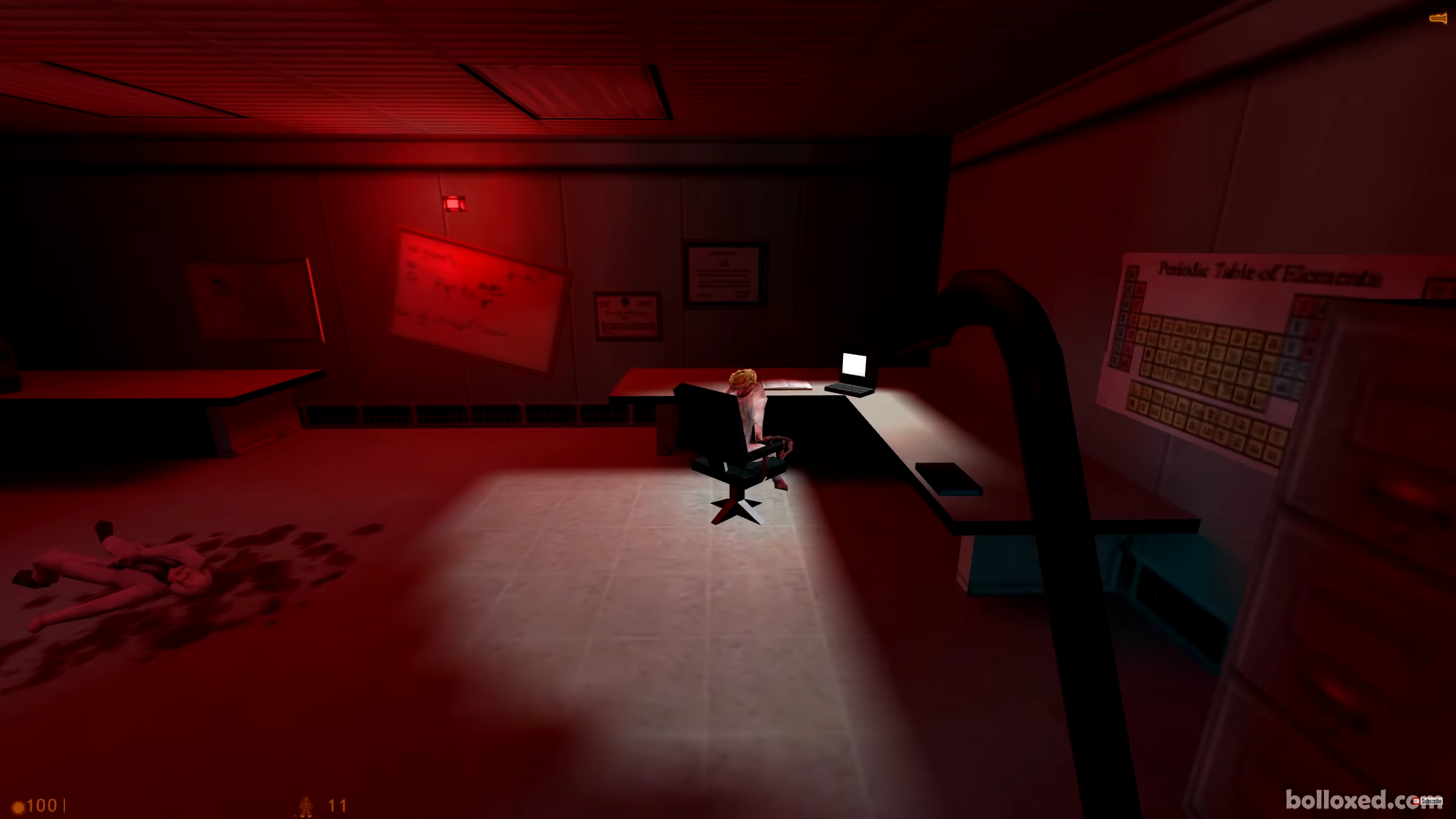Half-Life is an action FPS game released in 1998 by Valve. At the time of its release, it was critically acclaimed for its revolutionary approach to immersive narrative. Before Half-Life, the gameplay of FPS games followed the simple formula of “run, gun, fun” pioneered by Doom in 1993 with gameplay comprised of, as the formula implies, running and shooting enemies with story primarily told through cutscenes or text between levels.
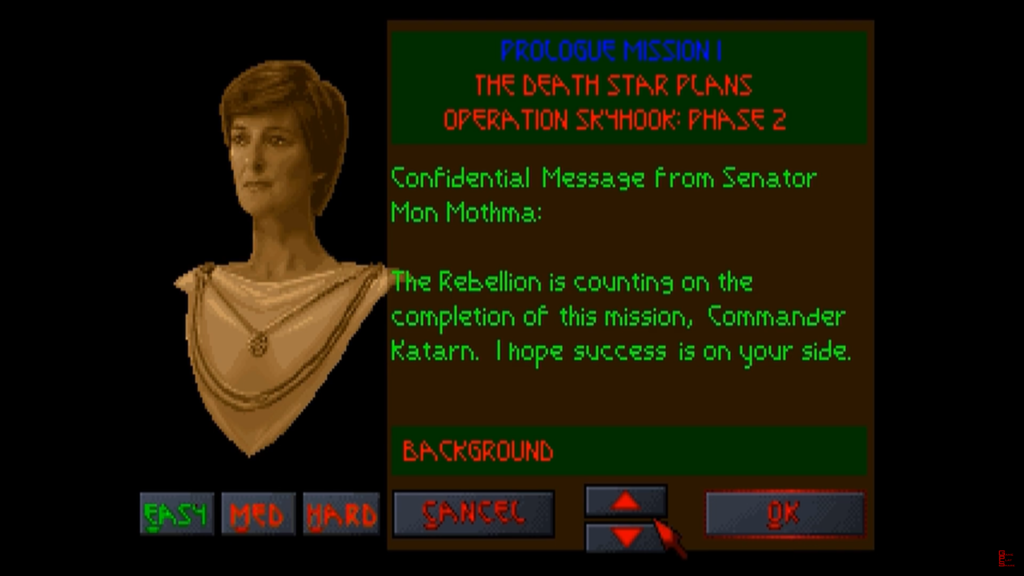
Half-Life intended to be different from the get-go, aiming to build an immersive world instead of a “shooting gallery”. The game utilizes scripted sequences to advance major plot points with the player-character remaining fully in control save for some short pauses when loading between chapters of the game. Receiving critical acclaim and winning over 50 PC “Game of the Year awards”, it holds the title of one of the most influential FPS games of all time and one of the best video games ever created. In this review, I would like to focus on how Half-Life’s immersive narrative through its environmental design sowed the seeds for modern day horror games.
Although many FPSs at the time dabbled with horror elements, such as Doom with their hellish monsters, they were never horror games themselves. Half-Life’s narrative and its usage of scripted sequences were inspired from the very get go by Horror. In a blog post by Marc Laidlaw, lead writer of Half-Life, he noted the inspiration of horror in creating scripted sequences:
“All narrative forms of drama, but especially horror, rely on pacing and rhythm. In horror timing is crucial. You have to set up your traps just so, and wait until your victim is precisely in position.”[1]
It’s through the first 1/3rd of Half-Life, where we see many of the roots of modern first-person horror games being laid. The player is introduced to the world at its most boring, with the player-character being a scientist who’s late for work. Then we see the proverbial stuff hit the fan when an experiment goes wrong leading to Lovecraftian-esque aliens flooding into the facility. The player-character is left needing to escape the facility, navigating through a series of passages, corridors, and vents.
As the player crawls through vents, they are subject to complete darkness save for a rechargeable flashlight, which is part of the player-character’s Hazardous Environment Suit. The flashlight leads to many jump scares through its limited battery capacity. The player turns it off while crawling through a vent to give it the chance to recharge only to be greeted with a head crab when turned back on. This mechanic has been used in many horror games such as Outlast or Slender, who now all have a bit of Half-Life in their blood now.
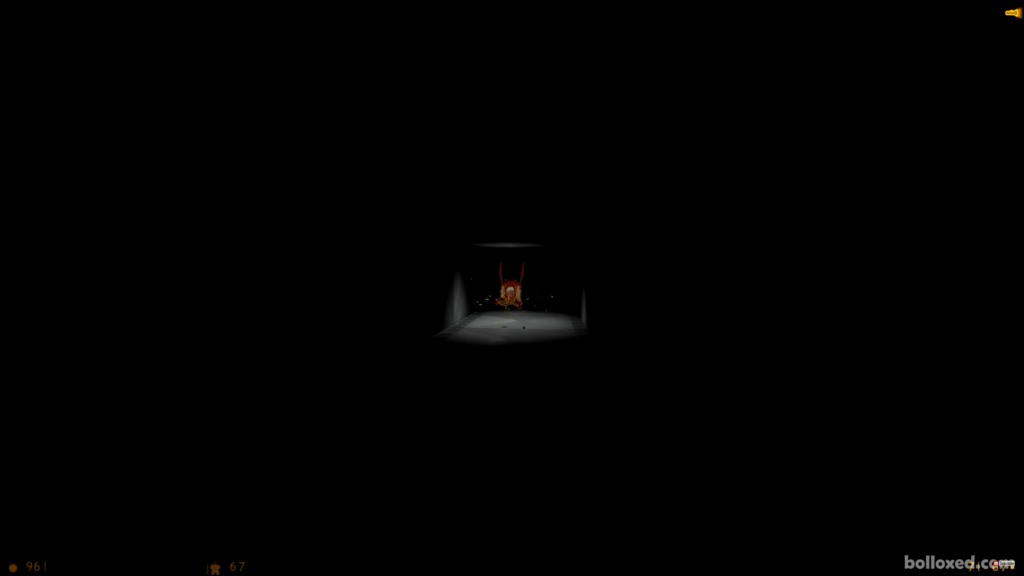

As the player traverses the crumbling facility, they come across set pieces showing the world reacting to the events unfolding in it. A scientist trying to help his coworker out of a vent before they are both dragged inside by an unknown monster, a zombified creature sneaking up on an unwitting security guard, or a scientist being attacked by a head crab. You see these deaths unfold, unable to save them while also learning more about how these monsters function and attack. In Doom, dead marines are a vehicle to deliver spare ammo to the player; in Half-Life, you see these characters dying, impacting the player with a sense of tension in the environmental horror unfolding around them. This trick would later be used in Dead Space, where you see a lot of people in lab coats being torn apart on the other side of bulletproof glass. Guiding you from set piece to set piece are environmental clues such as lights at the end of vents, or trails of blood leading you to monsters dismembering scientists and guards: A tactic seen in too many horror video games (and video games in general) to count.
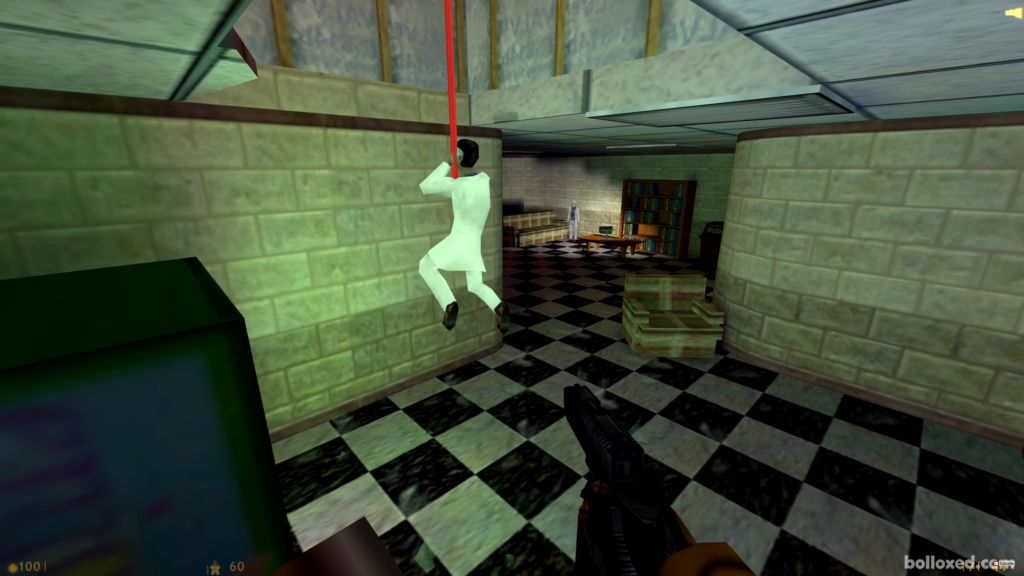

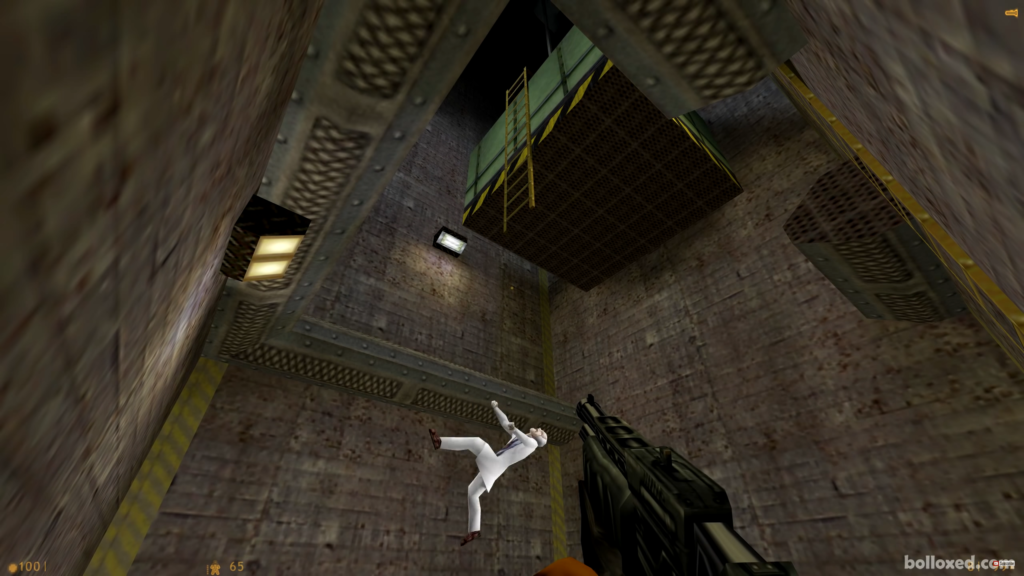

The environmental horror aspect of Half-Life was further iterated and built upon by Valve in later Half-Life games, leading to the famous Ravenholm Level of Half-Life 2 which utilizes the Head Crab Zombies in conjunction with the setting of the decaying town of Ravenholm to their creepiest extent. Most recently, the latest entry to the Half-Life franchise, Half-Life: Alyx, utilized the medium of VR and its ability to immerse its player in its world to delve deeper into horror than the franchise ever has before, serving up creepy atmospheric sequence after creepy atmospheric sequence.

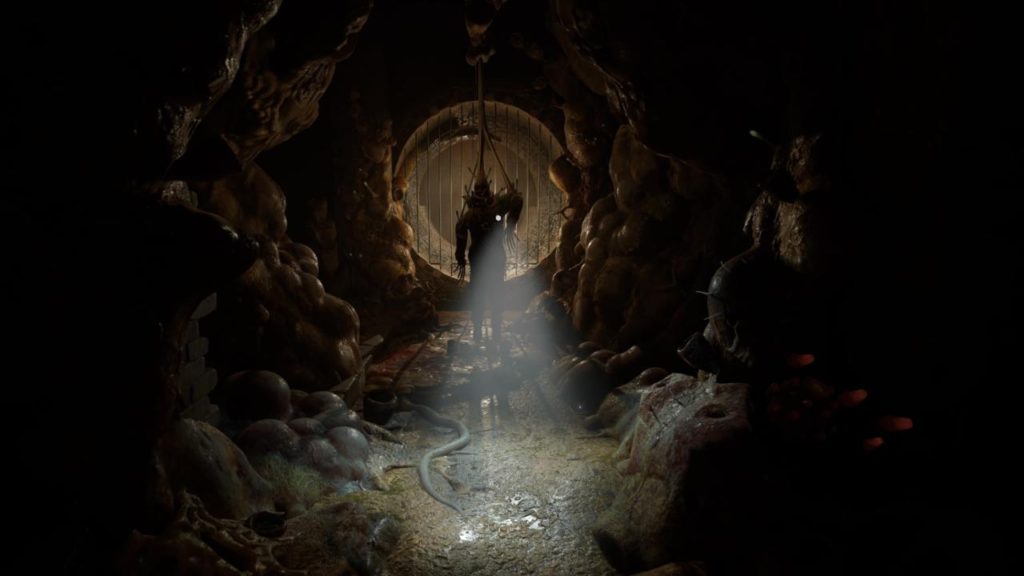
[1] https://www.marclaidlaw.com/writing-half-life/
All Half-Life images taken from HALF-LIFE – Full Game Walkthrough by Bolloxed on Youtube
Outlast Image: https://www.tecmundo.com.br/voxel/200040-tempo-limitado-outlast-dlc-graca-humble-store.htm
Star Wars: Dark Forces Image: https://www.youtube.com/watch?v=OHb9FDZua6o
Half-Life 2 Image: https://bloody-disgusting.com/editorials/3609451/half-life-2s-ravenholm-reveals-horror-end-resistance/
Half-Life: Alyx Image: https://www.gamespot.com/articles/half-life-alyx-cut-enemies-that-were-too-scary-in-/1100-6475051/
